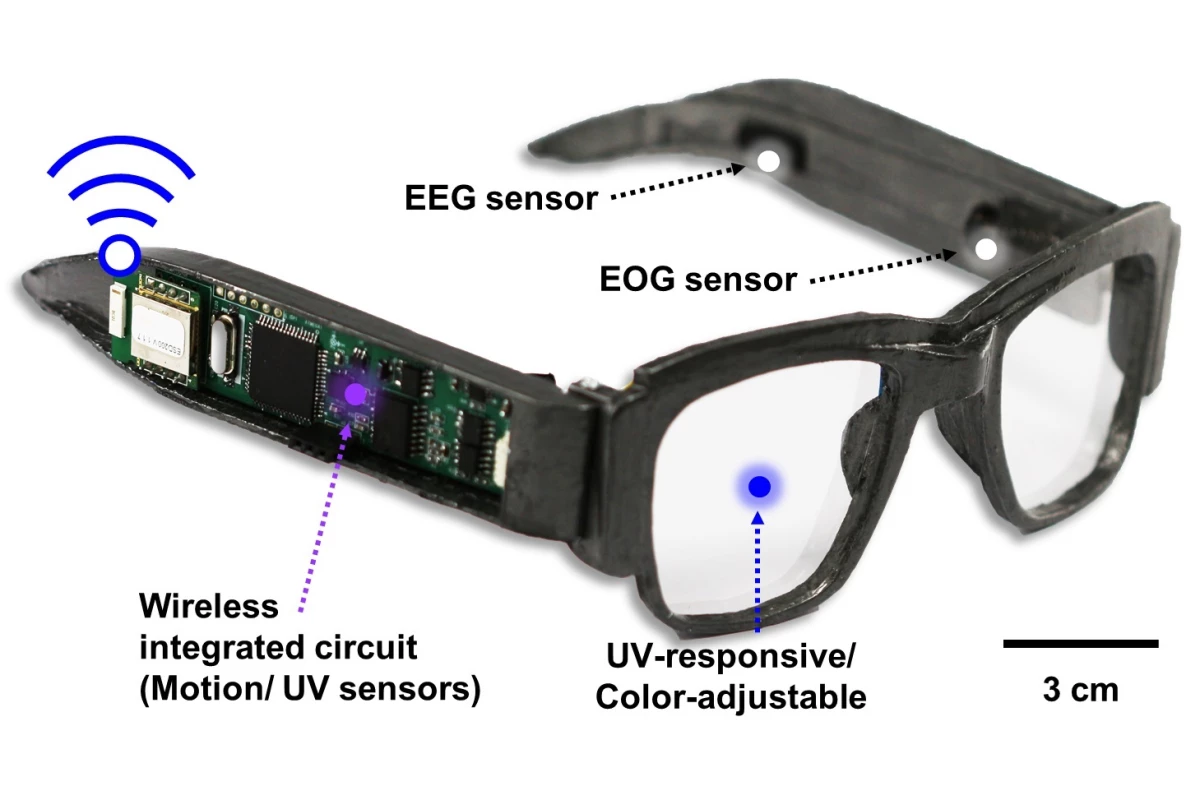We've already seen electronic glasses that watch the wearer's diet and automatically change focus, among other things. An experimental new pair monitors the user's health, lets them control games, and switch to being sunglasses as needed.
The prototype eyewear was developed by a team led by Assoc. Prof. Suk-Won Hwang, from Korea University's KU-KIST Graduate School of Converging Science and Technology.
Featuring a 3D-printed frame, the "e-glasses" incorporate flexible electrodes located near the wearer's ears and eyes. The former sensors serve as an electroencephalogram (EEG), monitoring electrical activity in the brain, while the latter function as an electrooculogram (EOG), which tracks eye movements. Both types of data are wirelessly transmitted from the glasses for processing.
In lab tests, the EEG was successfully used to record volunteers' alpha rhythms, which could in turn be used to monitor their health. The EOG data, on the other hand, allowed participants to play a brick-stacking video game simply by moving their eyes. Such a feature might conceivably find use in hands-free control of computers, or in assistive technologies designed for the physically challenged.
The e-glasses additionally have an ultraviolet light sensor on the side of one arm, which measures the intensity of incoming UV rays. When the sunlight gets bright enough, that sensor triggers a UV-blocking gel inside the lenses to get darker – thus temporarily turning the glasses into sunglasses.
That said, it should be noted that such electrochromic sunglasses are already commercially available.
Finally, the e-glasses also have an accelerometer in the same arm as the light sensor. It's able to track the user's posture and gait, and can detect when they fall down. This means that the glasses could be used in virtual reality systems, or to monitor people such as seniors, automatically sending alerts if mishaps are detected.
The technology is described in a paper that was recently published in the journal ACS Applied Materials & Interfaces.
Source: American Chemical Society




